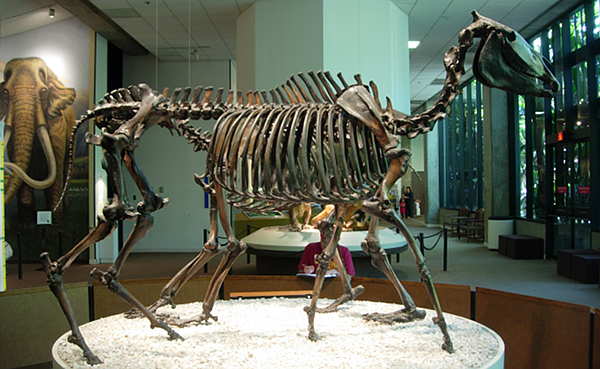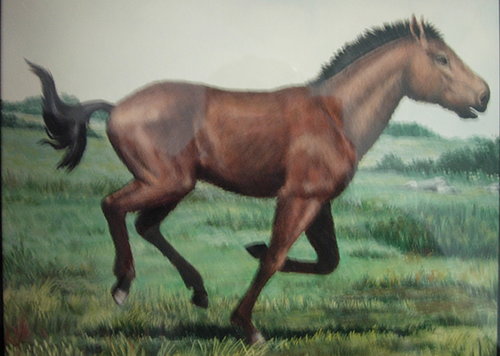
The Western Horse represents one of the larger prehistoric horse species – they were about the size of modern mustangs. Their earliest fossils date back 500,000 years and they died out at the end of the last Ice Age (around 11,000 years ago).
A Robust Family Member
Although they were the size of a horse, the Western Horse was stocky and robust, more like a zebra or the (also extinct) quagga. They were one of almost 9 different horse species native to North America – all of which were driven to extinction by the last Ice Age.
Although these animals more closely resembled zebras, than horses physically, their genetics aren’t any more similar.

Angry Ice Age
The Ice Age was rough for the inhabitants of North America and it’s end brought on a mass extinction of different animal species. This included all of the different horse species found there. Luckily some of them made their way across to Asia & Europe to later become the horses we know today. As many as 200 well preserved horse fossils have been found at the Rancho La Brea Tar Pits in LA and some of them are on display at their Page Museum onsite.
Not An Exact Science
Sadly we didn’t have scientists millions of years ago, so trying to piece together the history of horses is tricky business. There is a considerable amount of controversy when it comes to the taxonomy & lineage of extinct equidae. Be sure to meet some of the others like Mesohippus, Orohippus, Eohippus and Hipparion.
